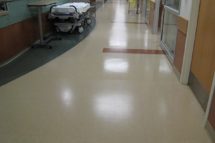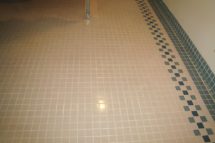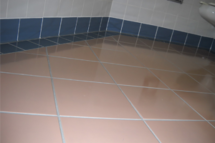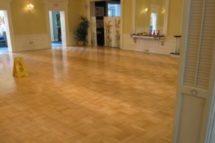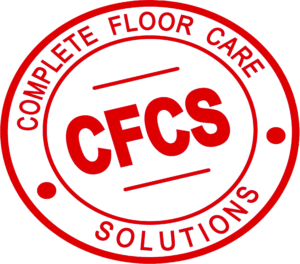VCT

If you have Vinyl Composition Tile (VCT) in your school, medical facility, retail store or any commercial building, then you know how important it is to maintain sanitary floors with a clean, like-new look day after day. Complete Floor Care Solutions (CFCS) can help you maintain your floors with a variety of Vinyl Floor Coating Products.
Depending on the look you would like to have and maintain, CFCS can use a variety of VCT Floor Coating solutions to achieve the desired appearance, and make sure the floor stays protected for easy maintenance and a clean look.
Benefits of Coating your VCT Floor
- Saves you money!
- No more stripping, waxing, or buffing
- Improved slip coefficient
- Improved indoor air quality (IAQ)
- Easy floor maintenance
- Great Warranty
What is Vinyl Composition Tile (VCT)
Vinyl composition tile (VCT) is a mix of thermoplastic binder, fillers, and pigments. VCT offers moderate pricing, durability, easy installation, and assorted colors and patterns. VCT can most often be found in schools, retail stores, and medical facilities. It effectively resists scuffs, burns, dents, and grease, but may require occasional heavy duty cleaning because the embossing can trap dirt.
VCT vs Vinyl Tile
Vinyl tile differs from VCT in having a higher amount of vinyl binder in the formula. Vinyl tile is considerably more flexible than vinyl composition tile; it has significantly higher resistance to abrasive wear and more resistance to impact damage.
Raw Materials
VCT is made from polyvinyl esters and inorganic fillers. Polyvinyl esters are manufactured using the same process as for PVC and is composed of chlorine (from common salt) and ethylene (from crude oil). Compared with other types of vinyl flooring, vinyl composition tile (VCT) contains a high proportion of inorganic filler. Fillers increase the dimensional stability and reduce the elasticity of vinyl flooring. They also improve flame spread rating and reduce smoke generation. Calcium carbonate (limestone) is the preferred filler in vinyl flooring. Talc and clay are rarely used because of the stiffening effect. In the past, asbestos was used as a filler.
Manufacturing Process
Vinyl resins normally used in VCTs are copolymers of vinyl chloride-vinyl acetate, with a vinyl acetate content of 6-13% by weight. Some PVC homopolymer may be blended into the resins. The manufacture of VCT requires a high proportion of filler. A typical formulation consists of 80% fillers and pigments, 13% vinyl resins, 5% plasticizers, and the remainder processing aids and stabilizers. After mixing, the dough-like mass is dropped onto a two-roll mill and accent colors are added. When the graining is judged to be right, the stock is folded into “blankets” to allow for more uniform graining when it passes through the sheeting calendar. It then passes through a second finishing calendar which reduces it to the final thickness and provides a smooth face. To produce tile with a surface-applied design, accent chips are applied to the face of the tile between the first and second calendars.


